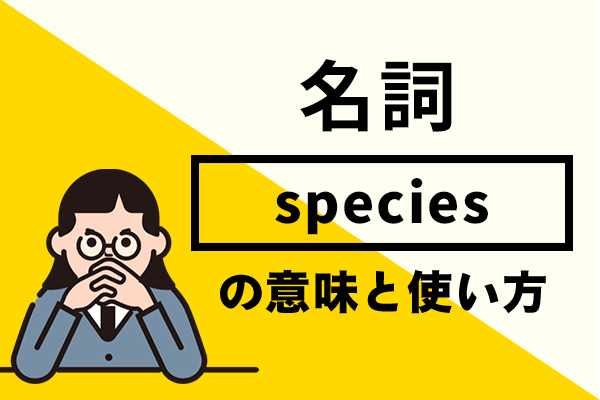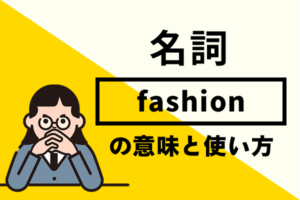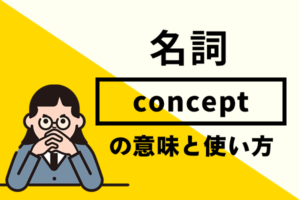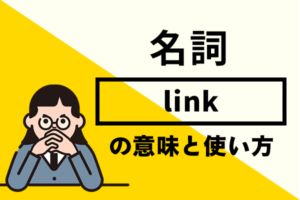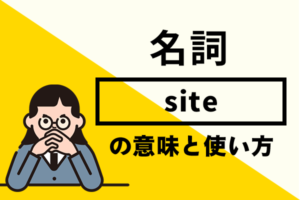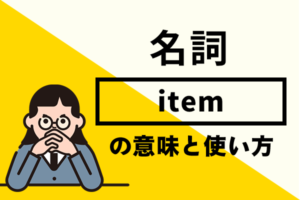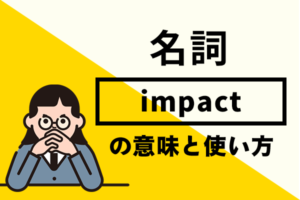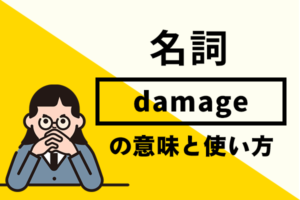speciesは生物学や環境問題、日常会話でも頻繁に登場する重要な名詞です。
「種(しゅ)」という意味で、動物や植物の分類を表す際に使われます。
この単語の最大の特徴は、単数形も複数形も同じ「species」という形を取ることです。
多くの英語学習者がつまずくポイントですが、一度理解すれば使いこなせるようになります。
TOEICや英検、学術論文でも頻出の単語であり、環境問題や生物多様性に関する議論では欠かせない用語です。
正確な使い方を身につけて、自信を持って使えるようにしましょう。
speciesのコアイメージ
speciesの語源はラテン語の「species」で、「外観、種類、形」を意味します。
生物学では、互いに交配可能で生殖能力のある子孫を残せる生物の集団を指します。
コアイメージは「共通の特徴を持つ生物のグループ」です。
分類学における最も基本的な単位であり、学名の一部としても使われます。
例えば、ホモ・サピエンス(Homo sapiens)は人類という種を表し、「Homo」が属名、「sapiens」が種小名です。
このように、speciesは生物の分類と識別に不可欠な概念なのです。
speciesの基本情報
| 項目 | 内容 |
|---|---|
| 単語 | species |
| 発音 | /ˈspiːʃiːz/(スピーシーズ) |
| 品詞 | 名詞 |
| 複数形 | species(単複同形) |
| 語源 | ラテン語 species(外観、種類) |
| 活用形 | 形 |
|---|---|
| 単数形 | species |
| 複数形 | species |
| 所有格(単数) | species’ |
| 所有格(複数) | species’ |
※speciesは単複同形の名詞です。文脈や動詞の形で単数か複数かを判断します。
例:This species is…(この種は)/ These species are…(これらの種は)
発音・アクセントの注意
speciesの発音は /ˈspiːʃiːz/(スピーシーズ)です。
第一音節の「spi」にアクセントがあり、「スピー」と長く発音します。
よくある間違いは「スピーシス」や「スペシーズ」と発音してしまうことです。
正しくは語尾を「シーズ」と濁らせて発音します。
発音のポイント:
- 第一音節「spi」を強く長く:/ˈspiː/
- 第二音節「cies」は「シーズ」:/ʃiːz/
- 「s」ではなく「sh」の音:/ʃ/
単数でも複数でも発音は同じなので、文脈で判断する必要があります。
リスニングでは、前後の動詞(is/are)や冠詞(a/the)に注意しましょう。
speciesの意味とニュアンス
種、種族(生物学的分類)
最も基本的で重要な意味です。
生物学における分類の基本単位で、共通の特徴を持ち交配可能な生物の集団を指します。
This species is endangered.
この種は絶滅危惧種である。
Scientists have discovered a new species of frog.
科学者たちは新しいカエルの種を発見した。
Many species are threatened by climate change.
多くの種が気候変動によって脅かされている。
種類、タイプ(一般的な分類)
生物学以外の文脈でも、「種類」や「タイプ」という意味で使われることがあります。
やや文語的・学術的な表現です。
This species of behavior is common among teenagers.
この種の行動は10代の若者の間でよく見られる。
A new species of crime has emerged in the digital age.
デジタル時代に新しい種類の犯罪が現れた。
What species of argument is this?
これはどの種類の議論なのか?
人類、人間(文語・哲学的)
「the human species」という形で、人類全体を指すことがあります。
哲学的、学術的な文脈で使われる表現です。
The survival of the human species depends on cooperation.
人類の生存は協力にかかっている。
Language is unique to the human species.
言語は人類に固有のものである。
We must consider the future of our species.
私たちは人類の未来を考えなければならない。
speciesの使い方
単数形としての使い方
一つの種について述べる場合、「a species」または「this species」という形で使います。
動詞は単数形(is, was, has)を使用します。
A species of butterfly has become extinct.
ある種の蝶が絶滅した。
This species is native to Australia.
この種はオーストラリア原産である。
The species has adapted to urban environments.
その種は都市環境に適応した。
複数形としての使い方
複数の種について述べる場合も「species」という形を使います。
動詞は複数形(are, were, have)を使用します。
Many species are losing their habitats.
多くの種が生息地を失っている。
These species have evolved over millions of years.
これらの種は何百万年もかけて進化してきた。
Hundreds of species were affected by the oil spill.
何百もの種が石油流出の影響を受けた。
前置詞との組み合わせ
speciesは特定の前置詞と頻繁に使われます。
「of」「in」「from」などが代表的です。
A species of bird(鳥の一種)
Species in danger(危機に瀕した種)
A species from the Amazon(アマゾン出身の種)
This is a rare species of orchid.
これは珍しい種のランである。
The species in this region are unique.
この地域の種は独特である。
speciesの名詞句
endangered species(絶滅危惧種)
環境問題で最も重要な表現の一つです。
絶滅の危機に瀕している種を指します。
The panda is an endangered species.
パンダは絶滅危惧種である。
We must protect endangered species.
私たちは絶滅危惧種を保護しなければならない。
The list of endangered species is growing.
絶滅危惧種のリストは増え続けている。
invasive species(侵略的外来種)
生態系に悪影響を及ぼす外来種を指します。
環境保護の文脈で頻出します。
Invasive species threaten native ecosystems.
侵略的外来種は在来の生態系を脅かす。
The government is working to control invasive species.
政府は侵略的外来種の制御に取り組んでいる。
This plant is considered an invasive species.
この植物は侵略的外来種と見なされている。
keystone species(キーストーン種)
生態系において特に重要な役割を果たす種を指します。
生物学や環境科学の専門用語です。
Wolves are a keystone species in this ecosystem.
オオカミはこの生態系におけるキーストーン種である。
The loss of a keystone species can collapse an entire ecosystem.
キーストーン種の喪失は生態系全体を崩壊させる可能性がある。
Bees are considered a keystone species for pollination.
ミツバチは受粉のためのキーストーン種と考えられている。
speciesのコロケーション
| コロケーション | 意味 | 例文 |
|---|---|---|
| rare species | 珍しい種 | This is a rare species of orchid. |
| native species | 在来種 | We should protect native species. |
| extinct species | 絶滅種 | Dinosaurs are extinct species. |
| discover a species | 種を発見する | They discovered a new species. |
| protect species | 種を保護する | We must protect endangered species. |
| identify species | 種を同定する | Scientists identified 50 species. |
| species diversity | 種の多様性 | This area has high species diversity. |
| species extinction | 種の絶滅 | Climate change causes species extinction. |
speciesは環境保護や生物学の文脈で特定の動詞・形容詞と組み合わせて使われます。
上記のコロケーションを覚えておくと、自然な英語表現ができるようになります。
speciesを使った例文(シーン別)
試験でよく出る例文
Many species are threatened by habitat loss.
多くの種が生息地の喪失によって脅かされている。
This species is found only in tropical rainforests.
この種は熱帯雨林にのみ生息している。
Scientists have identified over 8 million species on Earth.
科学者たちは地球上で800万種以上を確認している。
The species has evolved unique adaptations to survive.
その種は生き残るために独自の適応を進化させた。
Protecting biodiversity means saving thousands of species.
生物多様性を守ることは何千もの種を救うことを意味する。
日常会話で使う例文
What species of dog is that?
あれは何という種類の犬ですか?
I saw a rare species of bird in the park.
公園で珍しい種類の鳥を見た。
This aquarium has species from all over the world.
この水族館には世界中からの種がいる。
How many species of fish live in this lake?
この湖には何種類の魚が生息していますか?
That’s a dangerous species of spider.
それは危険な種類のクモだ。
ビジネス文書・メールで使う例文
Our company is committed to protecting endangered species.
当社は絶滅危惧種の保護に取り組んでいます。
The project aims to preserve native species in the area.
このプロジェクトは地域の在来種を保存することを目的としています。
We have documented 120 species in our environmental impact assessment.
環境影響評価において120種を記録しました。
The conservation program focuses on keystone species.
保全プログラムはキーストーン種に焦点を当てています。
Our research identified three previously unknown species.
私たちの研究で3つの未知の種を特定しました。
speciesの類義語・関連語
| 単語 | 品詞 | ニュアンス・解説 |
|---|---|---|
| kind | 名詞 | 種類(最も一般的で日常的) |
| type | 名詞 | タイプ、型(分類的) |
| variety | 名詞 | 変種、品種(多様性を強調) |
| genus | 名詞 | 属(speciesより上位の分類) |
| breed | 名詞 | 品種(家畜や栽培植物) |
| race | 名詞 | 人種、亜種 |
| class | 名詞 | 類、階級(より広い分類) |
| category | 名詞 | カテゴリー、範疇 |
「species」と似た意味を持つtypeの意味と使い方や、種類を表すkindの意味と使い方も合わせてチェックすると理解が深まります。
混同されやすい語との違い
species vs kind
speciesは生物学的な分類における正式な用語です。
科学的な文脈や環境問題で使われ、専門的なニュアンスがあります。
kindは「種類」を表す最も一般的で日常的な言葉です。
どんな物事の種類にも使え、カジュアルな表現です。
✅ This species is endangered.(科学的・正式)
この種は絶滅危惧種である。
✅ What kind of dog is that?(日常的・一般的)
あれは何という種類の犬ですか?
❌ What species of car do you drive?
✅ What kind of car do you drive?
解説:車には「species」は使いません。生物以外には「kind」や「type」を使います。
species vs type
speciesは主に生物の分類に使われる専門用語です。
生物学的な文脈で正確な分類を示します。
typeは物事の「タイプ」や「型」を表す一般的な言葉です。
生物にも物にも人にも使える汎用性の高い表現です。
✅ This species of butterfly is rare.(生物学的分類)
この種の蝶は珍しい。
✅ This type of butterfly is colorful.(一般的な分類)
この種類の蝶はカラフルだ。
✅ What type of music do you like?(物事の種類)
どんなタイプの音楽が好きですか?
❌ What species of music do you like?
解説:音楽には「species」は使いません。「type」「kind」「genre」などを使います。
試験・ビジネス頻出度
TOEIC
TOEICではPart 7(読解問題)で頻出します。
特に環境保護、科学研究、企業の社会的責任(CSR)に関する文章で登場します。
頻出トピック:
- 環境保護活動の報告書
- 生物多様性に関する記事
- 企業の持続可能性レポート
- 科学研究の成果発表
The company’s conservation efforts have helped protect several endangered species in the region.
同社の保全活動は、地域のいくつかの絶滅危惧種の保護に貢献した。
Researchers discovered three new species during the expedition.
研究者たちは調査中に3つの新種を発見した。
TOEICスコア700点以上を目指す場合、speciesを含む環境関連語彙は必須です。
「endangered species」「native species」「invasive species」などのコロケーションを覚えておきましょう。
英検
英検では準1級以上で頻出します。
特にエッセイや長文読解で環境問題が出題される際に登場します。
出題パターン:
- 準1級:環境保護に関する長文読解
- 1級:生物多様性についてのエッセイ
- 面接:絶滅危惧種についての意見
Many species are becoming extinct due to human activities.
人間の活動により多くの種が絶滅しつつある。
We need to take action to preserve species diversity.
種の多様性を保全するために行動を起こす必要がある。
英検1級のエッセイでは、「Should we spend more money on protecting endangered species?」といった形で出題されることがあります。
賛成・反対の両論を展開する際に、speciesを正確に使えることが重要です。
ビジネス英語
ビジネスシーンでは、環境報告書、CSRレポート、プレゼンテーションで使用されます。
特にSDGs(持続可能な開発目標)に関連する文脈で頻出します。
使用場面:
- 環境影響評価レポート
- 持続可能性に関するプレゼンテーション
- NGOとのパートナーシップ報告
- 製品の環境配慮に関する説明
Our supply chain policy ensures that no endangered species are affected.
当社のサプライチェーンポリシーは、絶滅危惧種が影響を受けないことを保証します。
The project successfully protected 15 native species in the area.
このプロジェクトは地域の15種の在来種を保護することに成功しました。
We conducted a biodiversity assessment covering 200 species.
私たちは200種を対象とした生物多様性評価を実施しました。
ネイティブがよく使う自然な表現
日常会話での定番フレーズ
What species is that?
あれは何という種ですか?
動物園や水族館でよく使われる質問です。
I’ve never seen this species before.
この種は見たことがない。
珍しい生物に遭遇したときの表現です。
This species is really cute!
この種は本当にかわいい!
動物について話すときのカジュアルな表現です。
Are there any dangerous species around here?
この辺りに危険な種はいますか?
旅行先で安全を確認するときに使います。
That’s a protected species, you can’t touch it.
それは保護種だから触れないよ。
野生動物との接触を避けるときの注意です。
ビジネスでの自然な表現
We’re committed to protecting endangered species.
私たちは絶滅危惧種の保護に取り組んでいます。
CSR活動を説明する際の定番表現です。
The project will not impact any threatened species.
このプロジェクトは脅威にさらされている種に影響を与えません。
環境影響評価での保証表現です。
Our research focuses on invasive species management.
私たちの研究は侵略的外来種の管理に焦点を当てています。
研究目的を説明するときの表現です。
We’ve documented over 100 species in the survey area.
調査地域で100種以上を記録しました。
調査結果を報告するときのフォーマルな表現です。
The habitat supports a diverse range of species.
その生息地は多様な種を支えています。
環境の豊かさを表現するときに使います。
学術・フォーマルな表現
The species exhibits unique morphological characteristics.
その種は独特の形態学的特徴を示す。
学術論文での記述表現です。
Speciation occurs when populations become reproductively isolated.
種分化は個体群が生殖的に隔離されたときに起こる。
進化生物学の専門的説明です。
The species’ distribution has been significantly altered.
その種の分布は大きく変化した。
生態学研究での観察結果の表現です。
Conservation strategies must prioritize keystone species.
保全戦略はキーストーン種を優先しなければならない。
環境保護政策を論じるときの表現です。
The study examined interspecific competition among three species.
その研究は3種間の種間競争を調べた。
生態学論文での研究内容の説明です。
speciesのよくある間違い
間違い1:複数形を「specieses」とする
❌ Many specieses are endangered.
✅ Many species are endangered.
解説:speciesは単複同形なので、複数形でも「species」のままです。「specieses」という形は存在しません。
❌ We found three different specieses.
✅ We found three different species.
解説:「species」に「-es」をつけないように注意しましょう。
間違い2:単数・複数の動詞の誤用
❌ This species are common in Asia.
✅ This species is common in Asia.
解説:「this species」は単数なので、動詞も単数形「is」を使います。
❌ These species is endangered.
✅ These species are endangered.
解説:「these species」は複数なので、動詞も複数形「are」を使います。
❌ A species have adapted to the environment.
✅ A species has adapted to the environment.
解説:「a species」は単数なので、「has」を使います。
間違い3:生物以外にspeciesを使う
❌ What species of car do you drive?
✅ What kind/type of car do you drive?
解説:speciesは基本的に生物に使います。車などの物には「kind」や「type」を使いましょう。
❌ This is a rare species of wine.
✅ This is a rare type/variety of wine.
解説:ワインには「type」「variety」「kind」などを使うのが自然です。
△ This species of behavior is unusual.
✅ This type/kind of behavior is unusual.
解説:行動に「species」を使うこともありますが、やや文語的です。日常会話では「type」や「kind」がより自然です。
speciesの理解度チェック
穴埋め問題(5問)
1. Many ______ are threatened by habitat destruction.
(多くの種が生息地の破壊によって脅かされている)
2. This ______ is found only in Madagascar.
(この種はマダガスカルにのみ生息している)
3. Scientists have discovered a new ______ of beetle.
(科学者たちは新しい種の甲虫を発見した)
4. The zoo has over 500 different ______ of animals.
(その動物園には500種以上の動物がいる)
5. We must protect ______ species from extinction.
(私たちは絶滅危惧種を絶滅から守らなければならない)
選択肢問題(5問)
1. This ______ native to South America.
a) species are
b) species is
c) specieses is
d) specieses are
2. How many ______ of fish live in this lake?
a) species
b) specieses
c) specie
d) species’
3. The panda is an ______ species.
a) danger
b) dangerous
c) endangered
d) endanger
4. ______ species can harm local ecosystems.
a) Invasive
b) Native
c) Rare
d) Protected
5. These ______ evolved over millions of years.
a) species has
b) species have
c) specieses has
d) specieses have
解答
穴埋め問題:
1. species
2. species
3. species
4. species
5. endangered
選択肢問題:
1. b) species is(単数なのでis)
2. a) species(複数形も同じ形)
3. c) endangered(絶滅危惧種)
4. a) Invasive(侵略的外来種)
5. b) species have(複数なのでhave)
speciesのコーパス実例
新聞記事:The New York Times
“Climate change is pushing many species to the brink of extinction, according to a new study published in Nature.”
Natureに掲載された新しい研究によると、気候変動により多くの種が絶滅の瀬戸際に追いやられている。
解説:環境問題を報じる記事での典型的な使用例です。
「push to the brink of extinction」は「絶滅の瀬戸際に追いやる」という重要な表現です。
“The Amazon rainforest is home to an estimated 10% of all species on Earth.”
アマゾンの熱帯雨林には、地球上の全種の推定10%が生息している。
解説:「be home to」は「〜の生息地である」という意味で、生物多様性を表現する際によく使われます。
統計データと組み合わせて使うパターンです。
日常会話:映画のセリフ
“What species is that? I’ve never seen anything like it!”
(映画「アバター」より)
あれは何という種だ?こんなものは見たことがない!
解説:未知の生物に遭遇したときの驚きを表現する自然な会話です。
「I’ve never seen anything like it」は「こんなものは見たことがない」という定番フレーズです。
“This species has been here for millions of years.”
(ドキュメンタリー番組より)
この種は何百万年もここに存在してきた。
解説:生物の進化や歴史を説明するときの典型的な表現です。
現在完了形「has been」で長期間の存在を示しています。
ビジネススピーチ:TED Talk
“We’re losing species at a rate 1,000 times faster than the natural extinction rate.”
(環境活動家のTED Talkより)
私たちは自然な絶滅速度の1000倍の速さで種を失っている。
解説:環境危機の深刻さを数値で示す強力な表現です。
「at a rate」は「〜の速度で」という意味で、統計を示すときによく使われます。
“Every species plays a role in maintaining the balance of our ecosystem.”
(生態学者のプレゼンテーションより)
すべての種は生態系のバランスを維持する役割を担っている。
解説:生物多様性の重要性を訴える際の説得力のある表現です。
「play a role in」は「〜において役割を果たす」という重要なフレーズです。
speciesに関するよくある質問
まとめ
- speciesは「種(しゅ)」を表す名詞で、単数形も複数形も同じ形
- 発音は /ˈspiːʃiːz/(スピーシーズ)で、語尾を「シーズ」と濁らせる
- 主に生物学的分類で使われるが、文語的に「種類」の意味でも使用可能
- 「endangered species」「invasive species」「keystone species」が重要な表現
- 単数か複数かは動詞の形(is/are)や冠詞(a/these)で判断する
- 生物以外の物には「kind」「type」「variety」を使う方が自然
- TOEICや英検では環境問題の文脈で頻出する重要単語
この記事の例文や練習問題を繰り返し復習すると、speciesの使い方が自然に身につきます。
英単語を効率よく覚えられるおすすめ本
英語学習の基本は、まず語彙力をしっかり身につけること。
ここでは、効率よく英単語を覚えて、長く使える力に変えていけるおすすめの本をご紹介します。

